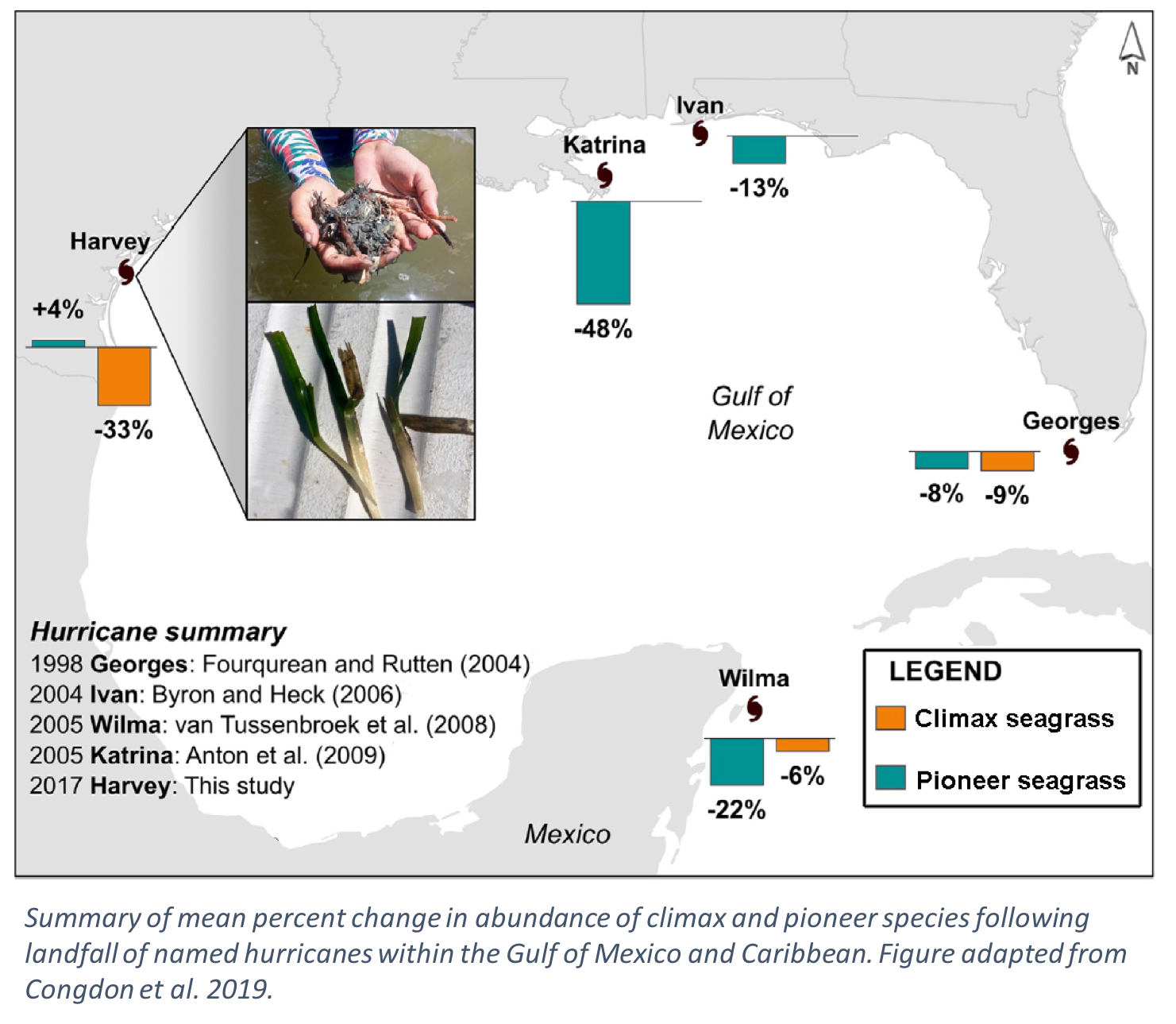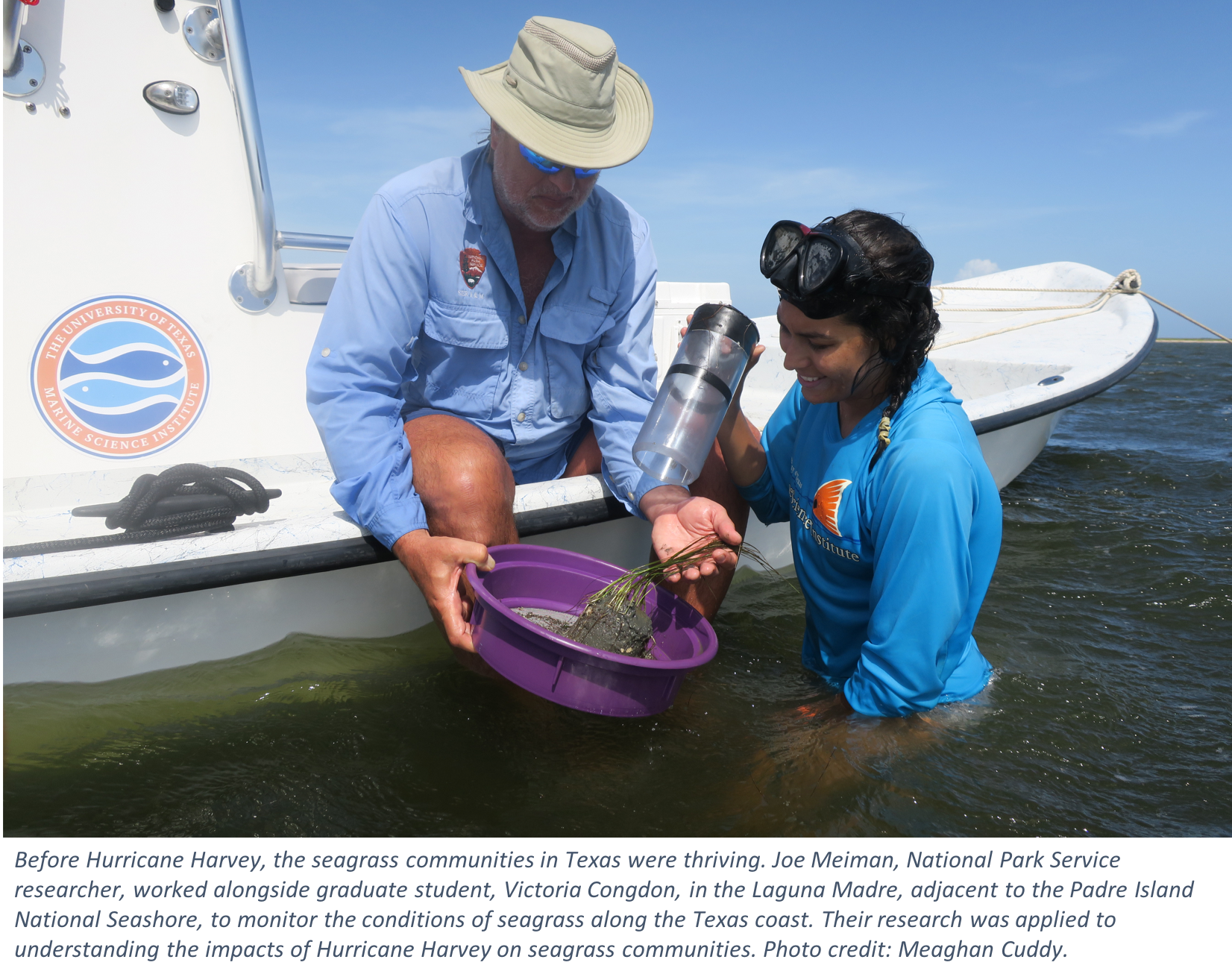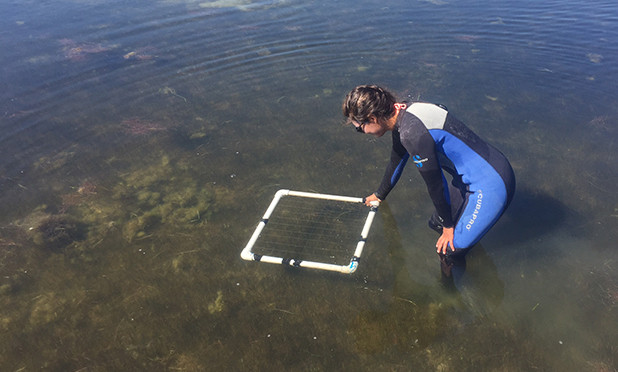 As the saying goes ‘you can never be too rich or too thin’ unless of course, you’re a seagrass blade in Texas. In Texas, the climax species such as Thalassia, or turtle grass, are two times narrower than their relatives in Florida. Skinny seagrass blades may increase their risk for destruction during hurricanes. Researchers at the University of Texas Marine Science Institute (UTMSI) recently published a study in Limnology and Oceanography Letters that showed unprecedented evidence that climax seagrass species suffered far more than the “weedy” pioneer species Halodule during Hurricane Harvey. All other major hurricanes in the Gulf of Mexico and the Caribbean showed the opposite results - with greater impacts to the pioneer species. The difference may lie in the physical structure of Texas seagrass. Turtle grass is typically thought to be more resilient to extreme storms due to their wide leaves and robust root system. In fact, during other big hurricanes like Wilma and Georges, turtle grass did not significantly decrease, while in Texas - Hurricane Harvey caused a turtle grass bed decline of 33%!
As the saying goes ‘you can never be too rich or too thin’ unless of course, you’re a seagrass blade in Texas. In Texas, the climax species such as Thalassia, or turtle grass, are two times narrower than their relatives in Florida. Skinny seagrass blades may increase their risk for destruction during hurricanes. Researchers at the University of Texas Marine Science Institute (UTMSI) recently published a study in Limnology and Oceanography Letters that showed unprecedented evidence that climax seagrass species suffered far more than the “weedy” pioneer species Halodule during Hurricane Harvey. All other major hurricanes in the Gulf of Mexico and the Caribbean showed the opposite results - with greater impacts to the pioneer species. The difference may lie in the physical structure of Texas seagrass. Turtle grass is typically thought to be more resilient to extreme storms due to their wide leaves and robust root system. In fact, during other big hurricanes like Wilma and Georges, turtle grass did not significantly decrease, while in Texas - Hurricane Harvey caused a turtle grass bed decline of 33%!
Victoria Congdon, a Ph.D. student at The University of Texas Marine Science Institute led the study. Despite damage to their homes and laboratories, she and her coauthors, Christina Bonsell, Meaghan Cuddy and Ken Dunton, all from UTMSI, were on the water just two weeks after the hurricane. Seagrass monitoring stations were established before Harvey and, of those, her team was able to sample 126 stations after the storm. “We were pretty surprised,” reflected Congdon. “Turtle grass has a pretty hardy root system, but in some places, they were dead and just mowed down like a lawn mower all the way to the roots.” They reported that the reason Texas seagrass experienced a different impact from hurricane force winds and waves may be directly related to the width of their blades. Texas is unique in that barrier islands create sheltered bay systems with less wave action. One idea that emerged is with more protection from the waves, turtle grass blades are much thinner than their counterparts throughout the Gulf of Mexico and the Caribbean.
 More research is needed to fully understand the full scope of the reasons for the blade width in Texas, but one thing is for certain – the loss of turtle grass is significant for the Texas coast. “It grows much slower than our Halodule and could take several years to a decade or more to reach pre-hurricane levels.” said Congdon.
More research is needed to fully understand the full scope of the reasons for the blade width in Texas, but one thing is for certain – the loss of turtle grass is significant for the Texas coast. “It grows much slower than our Halodule and could take several years to a decade or more to reach pre-hurricane levels.” said Congdon.
This research was made possible by a National Science Foundation RAPID grant and the Texas Seagrass Monitoring program partners: Mission-Aransas National Estuarine Research Reserve, National Park Service, Coastal Bend Bays & Estuary Program, and Texas General Land Office.









